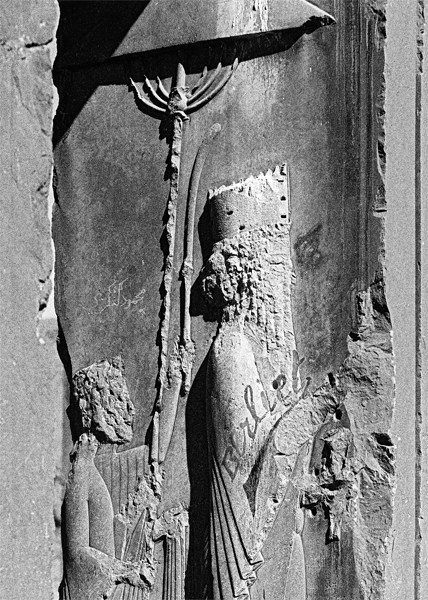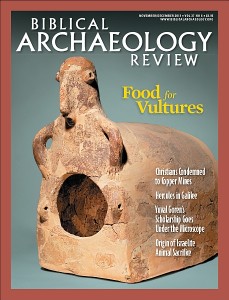
Hamlet. Do you see yonder cloud that’s almost in shape like a camel?
Polonius. By the mass, and ’tis like a camel, indeed.
Hamlet. Methinks it is like a weasel.
Polonius. It is back’d like a weasel.
Hamlet. Or like a whale?
Polonius. Very like a whale.
(Hamlet, Act III, scene ii, ll. 391–399)
I was staring at a photograph of Crown Prince Xerxes in the palace of Darius at Persepolis on page 30 of the latest annual report of the Netherlands Institute for the Near East and the Netherlands Institute in Turkey. Behind Xerxes was an acolyte holding a towering rod or shaft on top of which was a seven-branched menorah—plain as the nose on your face! What was a menorah doing in the palace of Darius at Persepolis?
I contacted Wouter F.M. Henkelman, the Dutch scholar who wrote the article. He informed me that what I was seeing was really a parasol over Xerxes’ head. There are a number of these Persian parasols, all of the same type, he said.
This made no sense. I was feeling a little like Polonius in Hamlet. I was sure Dr. Henkelman was right, but I couldn’t see it. Can you?
But then I looked again at the top of the photograph. What I at first thought was the top of the inset engraved panel was in fact the shadow of the parasol. Above the shadow of the parasol was the rounded hood of the parasol itself. Mystery solved.
Still: What was a menorah-shaped set of wires doing holding open a parasol at Persepolis?—H.S.
Already a library member? Log in here.
Institution user? Log in with your IP address.

